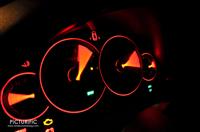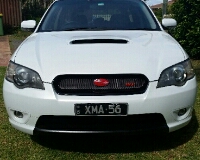Could you explain a bit more how you set up the diodes, if it's not a secret?
If we're talking voltage pulses, then you'd be using zener diodes, as they allow the current to flow both ways, but regulating out the fluctuations? In layman's terms - sine wave not good?
Lets talk tuning (KiDo Tunes)
Re: Lets talk tuning (KiDo Tunes)
Running no. of weeks without breaking something in the lib: 0
No. of things still to fix in in the lib: 97
No. of things still to fix in in the lib: 97
-

alexeiwoody - Posts: 1900
- Joined: Thu Jul 12, 2012 11:47 pm
- Location: Melbourne
- Car: MY07 LibGT 5EAT
- Real name: Alexei
Re: Lets talk tuning (KiDo Tunes)
If this is true then why don't all MY07 MT Libs demonstrate this behavior. I've checked many stock cars that don't and also tuned cars where either the cruise AVCS table hasn't been changed or the changes have been minimal in both cruise and non cruise. Ain's car is one that shows no symptoms.
What are your thoughts on the theory a tuned car has many more small increments requested of the AVCS system to improve driveability whilst the stock tables are setup in bands with less changes requested.
Over the life of the car the cam gears and solenoids would see more work done in a tuned car leading to earlier failure. Failure also being contributed to by the use of thinner Subaru specified oil.
In most cars the oscillation stops by 2800 RPM. How is that explained with regards to the diode theory.
In the mechanical failure theory this has been explained by suggesting at higher RPM there is sufficient oil pressure to achieve the AVCS target though left un checked would see the OCV failing too due to overwork.
I'll be getting my gears and OCVs changed shortly so will see if the sine wave remains. I'm sure Ben will be over the day I get the car back to get a log.
What are your thoughts on the theory a tuned car has many more small increments requested of the AVCS system to improve driveability whilst the stock tables are setup in bands with less changes requested.
Over the life of the car the cam gears and solenoids would see more work done in a tuned car leading to earlier failure. Failure also being contributed to by the use of thinner Subaru specified oil.
In most cars the oscillation stops by 2800 RPM. How is that explained with regards to the diode theory.
In the mechanical failure theory this has been explained by suggesting at higher RPM there is sufficient oil pressure to achieve the AVCS target though left un checked would see the OCV failing too due to overwork.
I'll be getting my gears and OCVs changed shortly so will see if the sine wave remains. I'm sure Ben will be over the day I get the car back to get a log.
"If A is a success in life, then A equals x plus y plus z. Work is x; y is play; and z is keeping your mouth shut."
-

bass_straitener - -stickered-
- Posts: 2247
- Joined: Mon Jul 25, 2011 8:31 pm
- Location: Melbourne, Victoria
- Car: MY12 C63
- Real name: Bruce
- Profile URL: viewtopic.php?f=10&t=14781
Re: Lets talk tuning (KiDo Tunes)
alexeiwoody wrote:Could you explain a bit more how you set up the diodes, if it's not a secret?
If we're talking voltage pulses, then you'd be using zener diodes, as they allow the current to flow both ways, but regulating out the fluctuations? In layman's terms - sine wave not good?
If that was your accelerator pedal signal generating the sine waye, how would it drive?
The vehicles owner is doing the testing
bass_straitener wrote:If this is true then why don't all MY07 MT Libs demonstrate this behavior. I've checked many stock cars that don't and also tuned cars where either the cruise AVCS table hasn't been changed or the changes have been minimal in both cruise and non cruise. Ain's car is one that shows no symptoms.
What are your thoughts on the theory a tuned car has many more small increments requested of the AVCS system to improve driveability whilst the stock tables are setup in bands with less changes requested.
Over the life of the car the cam gears and solenoids would see more work done in a tuned car leading to earlier failure. Failure also being contributed to by the use of thinner Subaru specified oil.
In most cars the oscillation stops by 2800 RPM. How is that explained with regards to the diode theory.
In the mechanical failure theory this has been explained by suggesting at higher RPM there is sufficient oil pressure to achieve the AVCS target though left un checked would see the OCV failing too due to overwork.
I'll be getting my gears and OCVs changed shortly so will see if the sine wave remains. I'm sure Ben will be over the day I get the car back to get a log.
Because of the engine bay item which generates the sine wave and it is reduced above 2800rpm, not eliminated but that is the OCV duty cycle tables compensating, where it alters from -7 at 2400rpm to -10.5 duty cycle at 2800rpm! The positive ranges go from 3.55 to 4.7%
Hmm, actually thanks for the idea
Odd that is is only the MY07/08 though? The diode test car has a PLX Oil Pressure gauge being logged via the tactrix, with the oil pressure sensor in the AVCS banjo bolt(double banjo bolt fitted) so it will indicate how much OCV variance occurs and see what pressure pulses are generated with the diodes in and out. The AVCS cam gear sensor is being left diode free to confirm that the gear is operating normally and that engine bay noise(the equivalent of RFI in a server room) is no longer in the engine bay loom.
KiDo Racing Tunes Info: HERE
Great minds discuss ideas;
Average minds discuss events;
Small minds discuss people
Great minds discuss ideas;
Average minds discuss events;
Small minds discuss people
-

KiDo_Tuning - Posts: 2801
- Joined: Sun Jun 10, 2012 11:53 pm
- Car: Subarus + Nissans
- Real name: Matt
Re: Lets talk tuning (KiDo Tunes)
Post some logs up
- <GB>
- Posts: 2290
- Joined: Tue Nov 22, 2011 9:05 am
- Location: MELBOURNE
- Car: 08 Liberty STI
- Profile URL: viewtopic.php?f=18&t=14660
Re: Lets talk tuning (KiDo Tunes)
Gday fellas,
i spoke to matt 6 months ago roughly about the PO420 code i was having with my 2008 2.5i sedan..
its just come back on after 2 months and now am now getting quite fed up with it.
subaru have told me that im up for 4k to replace my catalytic converter, however doing alot of research into this i have realised there are other possible issues which could not be as major such as a sensor etc..
i do remember talking to matt about a possible tune that will block the rear 02 sensor behind my cat and that will then allow my CEL to turn off..
can you message me as to whats involved? so we can discuss further.
regards,
scott
i spoke to matt 6 months ago roughly about the PO420 code i was having with my 2008 2.5i sedan..
its just come back on after 2 months and now am now getting quite fed up with it.
subaru have told me that im up for 4k to replace my catalytic converter, however doing alot of research into this i have realised there are other possible issues which could not be as major such as a sensor etc..
i do remember talking to matt about a possible tune that will block the rear 02 sensor behind my cat and that will then allow my CEL to turn off..
can you message me as to whats involved? so we can discuss further.
regards,
scott
- 2008Liberty
- Posts: 47
- Joined: Tue Nov 15, 2011 5:24 pm
- Car: 2008 satin white 2.5i sedan
- Real name: Scott
Re: Lets talk tuning (KiDo Tunes)
Probably going to regret posting this because my email is overloaded enough as it is but... HItachi ECU is no longer an unflashable ECU, even for the GC8 WRX and preface NA 
Not a cheap option but it can now be done.
Not a cheap option but it can now be done.
KiDo Racing Tunes Info: HERE
Great minds discuss ideas;
Average minds discuss events;
Small minds discuss people
Great minds discuss ideas;
Average minds discuss events;
Small minds discuss people
-

KiDo_Tuning - Posts: 2801
- Joined: Sun Jun 10, 2012 11:53 pm
- Car: Subarus + Nissans
- Real name: Matt
Re: Lets talk tuning (KiDo Tunes)
YES! This makes me very very very happy! If you're busy can anyone else tune them. XRT maybe? Is it the standard tatrix route or does it need specialist equipment?
TOM
2004 MY04 2.5i Liberty Wagon (5MT)
2004 MY04 2.5i Liberty Wagon (5MT)
-

DownUnder - Posts: 244
- Joined: Tue Mar 05, 2013 3:23 pm
- Location: Adelaide, SA
- Car: 2004 MY04 Liberty 2.5i Wagon Manual
- Profile URL: viewtopic.php?f=10&t=24070
Re: Lets talk tuning (KiDo Tunes)
KiDo_Tuning wrote:Probably going to regret posting this because my email is overloaded enough as it is but... HItachi ECU is no longer an unflashable ECU, even for the GC8 WRX and preface NA
Not a cheap option but it can now be done.
You may hear from D_Chang soon
MY08 GT Spec.B Diamond Grey Sedan
-

agan - Posts: 1085
- Joined: Fri Apr 09, 2010 11:32 pm
- Location: Perth, WA
- Car: MY08 GT Spec.B Sedan
- Real name: patrick
- Profile URL: viewtopic.php?f=10&t=18369
Re: Lets talk tuning (KiDo Tunes)
So..... Matt, when are you next in Perth? 
Below car has been gone for quite some time now... blew bottom end bearing and dealership screwed me! Now driving 2008 WRX with ~65k kms on the clock. Only has cat back exhaust and tune by KiDo at the moment! More to come... but slowly!
Purchased recently (12/11/2013), already with: Stage 2 Pedders lowered springs, rear Whiteline sway bar, Advan Racing TCII 18x8 wheels, k&N pod filter, custom 3" exhaust system from turbo back with Magnaflow mufflers. ECUTEK tune of some sort (hopefully soon to be fixed)..... now FIXED!! Now KiDo Tuned!
Added: HID kit, EZ lip equivalents to the front and sides, and various LED treatments, oem boot spoiler, [LGT WRC] plates, GFB Respons BOV for extra Pssscchhh! --> Gone... I couldn't afford it's heart transplant... but keep a look out, as it will come back on sale soon!
Purchased recently (12/11/2013), already with: Stage 2 Pedders lowered springs, rear Whiteline sway bar, Advan Racing TCII 18x8 wheels, k&N pod filter, custom 3" exhaust system from turbo back with Magnaflow mufflers. ECUTEK tune of some sort (hopefully soon to be fixed)..... now FIXED!! Now KiDo Tuned!
Added: HID kit, EZ lip equivalents to the front and sides, and various LED treatments, oem boot spoiler, [LGT WRC] plates, GFB Respons BOV for extra Pssscchhh! --> Gone... I couldn't afford it's heart transplant... but keep a look out, as it will come back on sale soon!
-

d-chang - -stickered-
- Posts: 636
- Joined: Tue Feb 21, 2012 6:29 pm
- Location: Perth, Western Australia
- Car: MY05 Liberty GT
- Real name: Daniel
- Profile URL: viewtopic.php?f=7&t=15749
Re: Lets talk tuning (KiDo Tunes)
d-chang wrote:So..... Matt, when are you next in Perth?
Interested as well...
-

Anson - Posts: 180
- Joined: Sat Mar 03, 2012 12:46 pm
- Car: 2006 Spec.B Wagon SC
Re: Lets talk tuning (KiDo Tunes)
Melbourne, Canberra, Brisbane, Gold Coast, Adelaide, Perth, Auckland and Mackay(plus a few more Sydney trips) are all set for this year.
Custom route with speccialist equipment and it is based on the Hitachi ECU is developed from a Unisia JECS ECU No Tactrix needed, just a USB cable but it is still not a cheap option... pricing to be finalised shortly.
No Tactrix needed, just a USB cable but it is still not a cheap option... pricing to be finalised shortly.
DownUnder wrote:YES! This makes me very very very happy! If you're busy can anyone else tune them. XRT maybe? Is it the standard tatrix route or does it need specialist equipment?
Custom route with speccialist equipment and it is based on the Hitachi ECU is developed from a Unisia JECS ECU
KiDo Racing Tunes Info: HERE
Great minds discuss ideas;
Average minds discuss events;
Small minds discuss people
Great minds discuss ideas;
Average minds discuss events;
Small minds discuss people
-

KiDo_Tuning - Posts: 2801
- Joined: Sun Jun 10, 2012 11:53 pm
- Car: Subarus + Nissans
- Real name: Matt
Re: Lets talk tuning (KiDo Tunes)
That makes d_chang a very happy man 
MY08 GT Spec.B Diamond Grey Sedan
-

agan - Posts: 1085
- Joined: Fri Apr 09, 2010 11:32 pm
- Location: Perth, WA
- Car: MY08 GT Spec.B Sedan
- Real name: patrick
- Profile URL: viewtopic.php?f=10&t=18369
Re: Lets talk tuning (KiDo Tunes)
KiDo_Tuning wrote:Melbourne, Canberra, Brisbane, Gold Coast, Adelaide, Perth, Auckland and Mackay(plus a few more Sydney trips) are all set for this year.DownUnder wrote:YES! This makes me very very very happy! If you're busy can anyone else tune them. XRT maybe? Is it the standard tatrix route or does it need specialist equipment?
Custom route with speccialist equipment and it is based on the Hitachi ECU is developed from a Unisia JECS ECUNo Tactrix needed, just a USB cable but it is still not a cheap option... pricing to be finalised shortly.
Myself and a mate with a forester gt are both extremely keen when you head up to Brisbane/Gold Coast next
My05 Liberty GT Premium Wagon - Team White - Custom 3" Dump Pipe - Ultrex Cat Back Exhaust/Custom Twin Tips - K&N Filter - DIY Mesh Grill - Resonectomy - 18" King Wheels (Drifta) - Kobe Motorsport Silicon Inlet + SFB - Kobe Motorsport 50/50 BOV - Anycarlink 1080d - Whiteline Rear Sway Bars - AVO HD Mounts - Trailboss HD Towbar - DBA T2 Slotted Rotors Front And Rear
-

oldmate - Posts: 188
- Joined: Mon Jan 31, 2011 12:12 pm
- Location: Toowoomba QLD
- Car: MY05 2.0T Liberty GT Wagon
- Real name: Greg
Re: Lets talk tuning (KiDo Tunes)
Keen to know when your adelaide dates are matt. Wouldn't mind a bit of a tweak on my tune.
Cheers
Shav
MY07 Subaru Liberty GT Premium Sedan | HKS Panel filter | Pierburg 3 port | Whiteline adj sways F&R | Cusco HD mounts | Whiteline HD front sway links | Anycarlink AL-1080B | Ultrex s/s 3" CBE | Ultrex PU lip spoiler | Invidia s/s dump pipe and 100cel cat | KiDo tuned | DBA T2 rotors | Intima SS brake pads | Mishimoto TMIC | Koya ISR7 wheels | 265L Kobe fuel pump | Diamond Works SI Drive dial | Bilsteins
COSMETIC MODS ON THE WAY
My other toys:
2012 Focus Cayo 2.0 road bike
2015 Cervelo S5 VWD road bike
Shav
MY07 Subaru Liberty GT Premium Sedan | HKS Panel filter | Pierburg 3 port | Whiteline adj sways F&R | Cusco HD mounts | Whiteline HD front sway links | Anycarlink AL-1080B | Ultrex s/s 3" CBE | Ultrex PU lip spoiler | Invidia s/s dump pipe and 100cel cat | KiDo tuned | DBA T2 rotors | Intima SS brake pads | Mishimoto TMIC | Koya ISR7 wheels | 265L Kobe fuel pump | Diamond Works SI Drive dial | Bilsteins
COSMETIC MODS ON THE WAY
My other toys:
2012 Focus Cayo 2.0 road bike
2015 Cervelo S5 VWD road bike
-

shav - Posts: 3609
- Joined: Tue Jun 26, 2012 12:01 pm
- Location: Adelaide, Southern Suburbs
- Car: MY07 Subaru Liberty GT Premium
- Real name: Shav
- Profile URL: viewtopic.php?f=10&t=18915&start=480
Re: Lets talk tuning (KiDo Tunes)
^^^ Yeah same here for Adelaide!
-

Mateusz - Posts: 30
- Joined: Wed Jan 05, 2011 7:21 pm
- Location: Adelaide
- Car: MY05 3.0R-B
- Real name: Matt
Who is online
Users browsing this forum: No registered users and 0 guests
